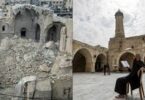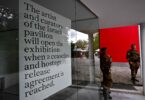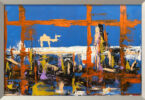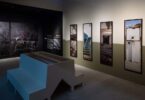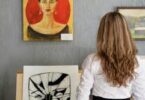ISTANBUL (Dailysabah): The Beykoz Glass and Crystal Museum, which stands out among the alternate cultural and historic locations of Istanbul, exhibits the magnificent journey of glass in Turkish history through objects dating from 700 years ago to the final period of the Ottomans
When one thinks of the art of glass, locations such as Venice and Bohemia spring to mind. However, Istanbul, the heart of many traditional arts, has been the center of its own unique style of glassmaking that synthesizes the East and the West. In the Ottoman Empire, the state paid great attention to glassmaking; thus glass earned a sizeable place among Ottoman arts. As is the case with palaces and mansions, glamorous glass works were used in the windows and chandeliers of mosques, the heart of spiritual life. For example, 16 glassblowers worked on the construction of Süleymaniye Mosque, the masterpiece of renowned Ottoman architect Sinan in Istanbul. French traveler Joseph Pitton de Tournefort, who traveled through the Ottoman lands between 1700 and 1702, spoke highly of the newly constructed Sultan Ahmed Mosque (Blue Mosque) and its pleasant-looking crystal balls, branching chandeliers and ostrich eggs, traditionally used to ward off spiders.
As narrated in the “Seyahatname” (“Books of Travels”) of Ottoman traveler Evliya Çelebi, glassmakers had a distinct place among the artists of old Istanbul. They included masters that manufactured wares to be used in daily life as well as artists that made unique objects that carried artistic value.
Path of Dervish Mehmed
The rooted art of glass in Ottoman times would gradually change as the empire turned its orientation toward the West. During the reign of Ottoman Sultan Selim III, who ascended to the throne in 1761, a Mevlevi dervish named Mehmed Dede, who adhered to the Sufism of Sufi philosopher Mevlana Jalaladdin Rumi, was sent to train in glassmaking in Venice by order of the palace. Dervish Mehmed was among the students sent to Europe by the Ottomans amid the interest in developments in the West.
This artist stayed in Venice for a while and learned opal glass manufacturing. Upon his return, he established a glass workshop in Beykoz, then in a village near Istanbul and later in a district of the city. Probably owing to his skill to the force of spiritual love in his heart, Mehmed shaped his glass brilliantly and his reputation grew. His glass artworks often resembled Mevlevi caps, reflecting the spirituality of Rumi. Although Sultan Selim III died in a domestic upheaval, he did a great service to the Turkish art of glassmaking.
Beykoz glass in Mecca
During the reign of Sultan Abdülmecid, who ascended to the throne in 1839, a glass factory named Beykoz Cam ve Billurat Fabrika-i Hümayunu (the Beykoz Imperial Factory of Glass and Crystal) started operating in the area. It was followed by numerous glass workshops in Beykoz, to the point that the adjective “Beykoz işi” (Beykoz work) came into being. Glassworks used in holy Islamic places in Mecca were also manufactured in Beykoz. Glass works similar to “Beykoz işi” were observed in a vast area spanning from Iran to India. Beykoz became eponymous with glass, although its fame has decreased nowadays.
Beykoz, with its rich past, currently hosts a comprehensive but relatively new glass museum. The Beykoz and Crystal Museum, which was launched by the Presidency of National Palaces in the restored former stables of Abraham Pasha Grove, houses a glittering world behind its doors.
The grove of Abraham Pasha, who rose to the rank of vizier during the reign of Sultan Abdülaziz, once housed mansions, birdhouses, pools and a theater. During the reign of Sultan Abdülhamid II, this land was purchased and opened to the public under the name “Liberty Garden.” Currently, only the restored stables survive on this 360-decare (89-acre) plot.
1,500 pieces on display
The museum consists of 12 thematic sections that house 1,500 pieces representing all kinds of glasswork. In the museum, which contains pieces from different palaces and museums in Turkey, especially Topkapı Palace, one can trace glassmaking in Turkish history through sparkling and magnificent examples. These works, dating between the 13th and 19th centuries, reflect the vast cultural codes of Ottoman and Turkish art while revealing its interaction with the West when necessary.
700-year-old glass plate
The oldest artifact in the Beykoz Glass and Crystal Museum’s collection is the 700-year-old glass plate found during the excavation of Kubadabad Palace of Alaeddin Keykubad, the ruler of the Seljuk Sultanate of Rum. Also known as the “Kubadabad Plate,” this work, bearing enamel and gilt ornaments, is dated between 1237 and 1246.
Another significant artifact is the ceremonial carriage of Sultan Mahmud II, which is noteworthy for the amount of crystal used in its making.
Almost unscathed Mamluk chandeliers, chandeliers adorned with old Turkish calligraphy, Ottoman colored and stained art known as “revzen,” glass objects inherited from Ottoman sultans such as Sultan Abdülhamid II and glass examples from Europe are some other distinctive objects on display at the museum.
The Beykoz Glass and Crystal Museum also houses a glass workshop that is especially fun for children, in addition to a library that serves as a source for those who want to dig deeper into the art of glass.
Resplendent in its natural beauty, the museum lies nestled in the hills of Beykoz, calling to those who want to enjoy a unique cultural atmosphere outside of Istanbul’s more famous historic locations.

